The secret to making a stainless steel pan non-stick is to preheat it on medium-high heat before adding the fat and food.
When I became fed up with changing my non-stick pan every few years because of the scratched or fading non-stick surface, my minimalist nature compelled me to research to see if I could use my beloved stainless steel pan to make my omelet without sticking to it.
So I started my research on how to make stainless steel non-stick. I came across contradicting information. Some suggested seasoning stainless steel pans to make them non-stick; others suggested never seasoning them.
I experimented with those suggestions and finally found my holy grail way of using stainless steel pans.
But Why Does the Food Stick to a Stainless Steel Pan
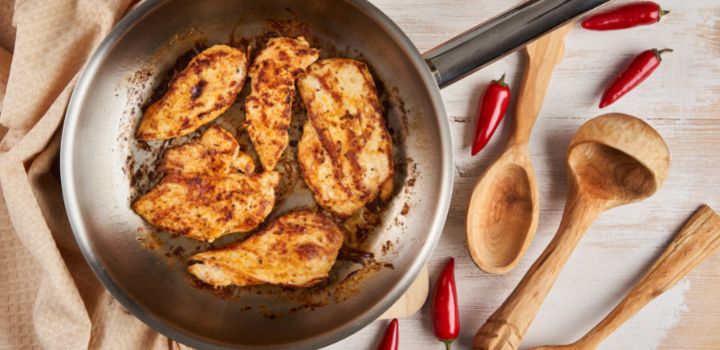
The surface of the stainless steel pan looks smooth; however, under a microscope, you can observe tiny pores. These pores close when the pan is heated and open up when the pan is chilled or in contact with cold food.
As the pan heats up, these perforations will grab onto the meat if you place it in too early, which is what causes it to cling.
Cold food can also bring the temperature of the preheated pan down. The contracted pores on a hot stainless steel pan won’t take long to open up and grasp onto the food when you put cold food on it, so it’s a good idea to make sure to give your food a little time to warm up on the counter before cooking.
For the same reason, you shouldn’t overcrowd your pan because doing so will significantly lower the pan’s temperature.
Food will stick if the temperature isn’t kept steady and the pan isn’t thoroughly greased to fill in all the cracks and produce a frictionless barrier.
Fish and eggs are two delicate foods that are particularly prone to sticking since they don’t have enough fat to lubricate the pan and crumble once cooked.
If the cookware is not cleaned properly, the left-behind food debris and oil can burn the next time you cook. Burnt bits add more friction to the pan’s surface, causing food to stick.
So How To Make Stainless Steel Non-Stick
The key is to cook your food in a stainless steel pan that has been preheated on medium-high heat. But hold off on adding the oil!
The Water Test for Hot Stainless Steel
To be sure that the pan is at the right temperature, do a water test.
When the pan is ready, the [Leidenfrost Effect] will be evident when you splash some water on it and watch the water ball up and dance around the surface of the pan.
The stainless steel pan will behave like a non-stick pan if it passes the water test.
If the pan is not hot enough, the drop of water will evaporate.
If it’s too hot, the drop of water will split it into several balls of droplets.
The droplet will turn into a ball like mercury if it’s at the right temperature.
This phenomenon is very helpful in everyday cooking on a stainless steel pan. The steam from the food lifts the food from the surface of the stainless steel pan, so food does not stick to it.
How to Season Stainless Steel Pan
Although seasoning stainless steel frying pans is not necessary, some professional chefs and home cooks may choose to do so to produce a smoother, more non-stick surface.
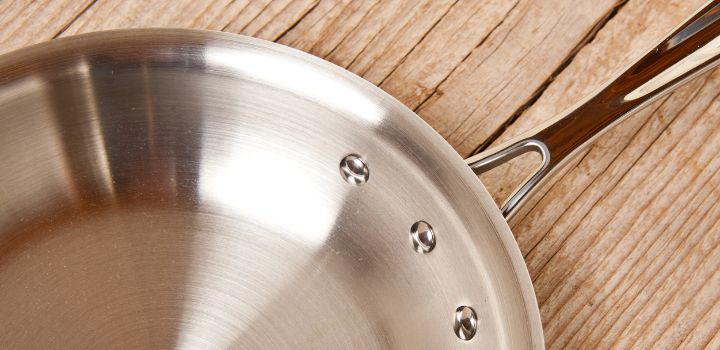
I read numerous articles throughout my research that suggested seasoning stainless steel by following these steps:
Add some oil to a stainless steel pan and heat it until the oil begins to smoke.
Once the smoke point is reached, turn off the stove and let the pan cool down.
Draining the oil, wipe the surface with paper towels.
In my opinion, this is just an extra step. Although seasoning stainless steel pans is possible, it serves no useful purpose. I use stainless steel pan because it requires less maintenance, is incredibly strong, and can withstand extremely high heat. Seasoning requires additional upkeep, is not very lasting on a stainless steel surface, and is destroyed by extreme heat.
Instead of seasoning, before adding any cooking oil, I advise preheating the stainless steel skillet and letting it get nice and hot.
Do you need to season your stainless steel pan?
No. Contrary to cast iron or carbon steel, stainless steel pans do not require seasoning.
The stainless steel is never seasoned. A cast iron surface becomes “seasoned” when carbon “binds” with it, forming a naturally non-stick layer. Stainless isn’t as porous, and the seasoning doesn’t stick well.
In stainless steel, the chromium prevents this process from occurring effectively and/or evenly, which will probably result in a heavily discolored and sticky pan. The stainless steel is also bright and shiny, so the polymerized oil layers look bad on your nice pan.
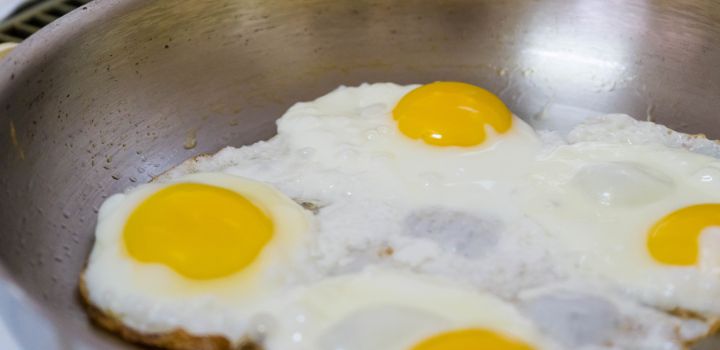
Tips and Considerations
Investing in a high-quality pan is crucial if you want to cook food well especially sautéing. Make sure to search for heavy gauge stainless steel with aluminum sandwiched inside.
Such a pan is highly responsive to temperature changes and will disperse heat evenly without scorching your food. If the base of the pan is heavy, it will remain flat and won’t distort with usage. Uneven bottoms can lead to hotspots and allow for uneven food cooking.
Never submerge or place it in the water while it’s still warm. Even extremely good pans can become warped in this way. You must wait until the pan is cool enough to touch before rinsing or washing it.
How I Make a Perfect Omelet in a Stainless Steel Pan
There is a reason why professional chefs choose stainless steel frying pans for omelets – With the right amount of heat and timing of adding in a little fat, and food, they can practically act like non-stick. Your omelet will slide right out of the pan without sticking.

Here’s how to make an omelet in a stainless steel frying pan:
1. Heat your pan over medium heat until it’s hot enough that a drop of water turns into a ball, just like mercury.
You don’t have to do this step every time. With experience, you can tell the right temperature by placing your hand a few inches above the pan.
2. Add a tablespoon of oil to the pan, and swirl it around until it coats the bottom.
3. While the pan is heating up, crack two eggs into a bowl, and beat them together with a fork until they’re well combined.
4. Add some salt and pepper to taste, finely chopped onions, and green chilies (optional), and pour the eggs into the hot pan.
5. Let it cook on one side for about 1 minute.
6. Gently slide the spatula under the omelet and flip it.
7. Cook the other side for 1 minute before taking it out on a plate.
8. Serve hot with a buttered slice of bread and hot tea.
The Bottom Line
Stainless steel pan can perform almost like a non-stick pan if you know how to make stainless steel non-stick. i.e., preheating and letting it reach the right temperature before adding fat and food.
On the other hand, sometimes you need a bit of sticking to deglaze it later for the pan sauce. That’s where stainless steel can do just that!
FAQs
How do I make sure stainless steel doesn’t stick?
You can make sure stainless steel doesn’t stick by ensuring it’s at the right temperature before adding oil and food. The right temperature is when the drop of water behaves just like a mercury ball on hot stainless steel.
The stainless steel is not at the right temperature when the drop of water sizzles and evaporates or when it splits into many smaller water balls.
At what temperature does stainless steel become non-stick?
At around 360 F, the Leidenfrost effect kicks in, and the stainless steel behaves like a non-stick pan. At this temperature, the drop of water behaves just like a mercury ball on the hot stainless steel. The stainless steel is not at the right temperature when the drop of water sizzles and evaporates or when it splits into many smaller water balls.
Why does everything stick to my stainless steel pan?
There can be a few reasons why everything is sticking to your stainless steel pan:
1. The stainless steel pan is not hot enough before adding food.
2. No fat is added.
3. The pan’s cooking surface is not properly cleaned, and there is food debris or sticky spots from previous cooking.
4. Let the meat or the eggs cook on one side before touching or turning them to the other side.
How do you make a stainless steel pan non-stick with water?
Around 360 F, the Leidenfrost effect will take place, and the steam that a drop of water on a pan produces will press out with enough power to lift the water droplet off the pan’s surface. This phenomenon is very useful in the kitchen. Suppose you cook your food, e.g., steak, in a stainless steel pan at this temperature.
In that case, the steam from the steak will create insulation between the steak and the surface of the pan; since it is no longer in direct contact with the pan and is protected by this layer of steam, it will not stick to the stainless steel surface.


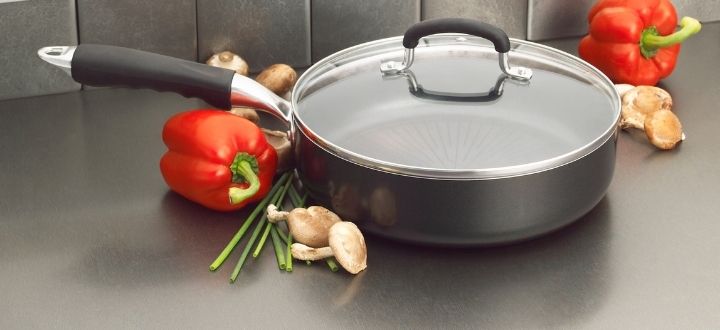

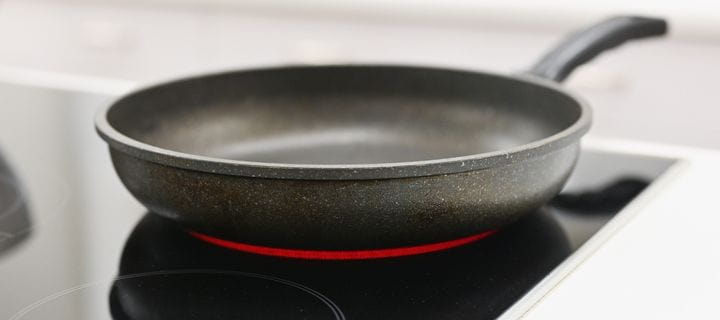

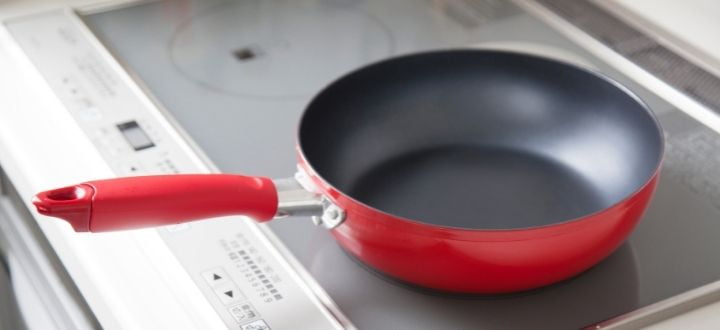
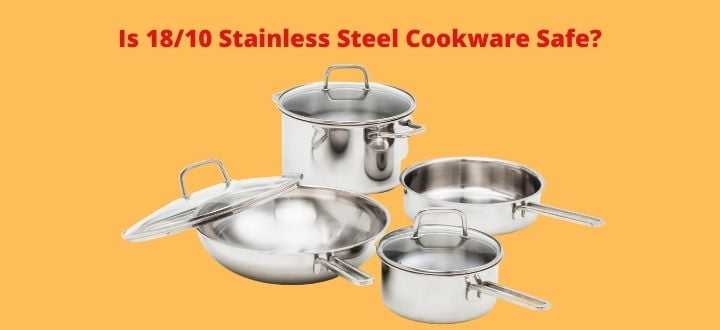
One Comment
Comments are closed.